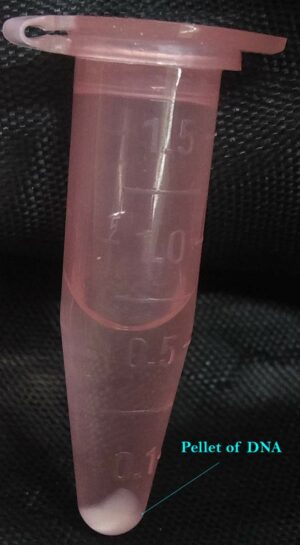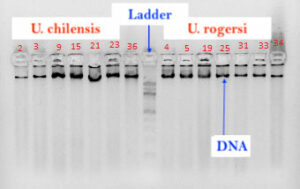Getting the genome information.
When two organisms look pretty similar in their morphology, it is most likely that they are the same species, but in some cases they are not, they belong to different species. This misidentification underestimates the biodiversity of the rays and the management and conservation would be a trouble.
To figure out if two or more specimens belong to the same species, there is a powerful tool that uses the information that is in the genome of the nucleus and mitochondria of the cells of any organism. To obtain that information, we first need to extract genomic DNA from a small piece of muscle from the organisms of interest. There are many protocols and commercial kits that we can use to obtain pure DNA with good quality and enough quantity. Most of them present four steps: muscle degradation, cell lysis, protein removal, DNA washing (Figure 1), and DNA hydration.

Microtube containing washed DNA. Photo © Ana Castillo-Páez.
To corroborate the integrity of the genomic DNA, we have to do two steps: first, we visualize the extraction in agarose gel (Figure 2), the good quality DNA will be in a single line (black) with very high; poor quality DNA will be in a black blot along of agarose gel.

Extractions of DNA (black line) Urotrygon on the agarose gel. Photo © Ana Castillo-Páez.
